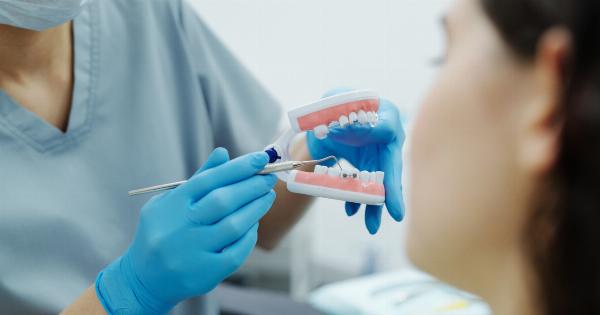Many parents wonder about the right time to consider braces for their child. Orthodontic treatment, including braces, can help correct misaligned teeth and improve oral health.
Understanding the optimal time to begin orthodontic treatment can ensure the best results for your child’s dental health in the long run.
Factors to Consider
Several factors should be taken into consideration when determining the best time to get braces for your child:.
Jaw Development
Children’s jaws are still growing, making it easier to shape their bone structures. Orthodontists often recommend early orthodontic evaluations, around the ages 7-9, to assess jaw growth and development.
This allows for timely intervention if any issues are detected.
Types of Bite Problems
The specific type of bite problem your child has can also affect the optimal time for braces. The most common bite issues include:.
Overbite
An overbite occurs when the upper front teeth overlap significantly with the lower front teeth. If left untreated, it can lead to gum problems, improper bite alignment, and potential damage to the lower teeth.
Underbite
An underbite, on the other hand, occurs when the lower front teeth protrude past the upper front teeth. This misalignment can cause difficulties with biting, chewing, and speech.
Crowding
Crowding occurs when there is insufficient space in the mouth for all the teeth to grow in their proper positions. This can lead to crooked teeth, difficulty with oral hygiene, and an increased risk of tooth decay and gum disease.
Open Bite
An open bite is characterized by the upper and lower front teeth not coming into contact when the back teeth are closed together. This can cause difficulty with biting, chewing, and speech.
Crossbite
Acrossbite refers to the misalignment of the upper and lower jaw, causing the upper teeth to bite inside the lower teeth when the jaws are closed. A crossbite can lead to uneven tooth wear, jaw discomfort, and functional issues.
Dental Development
The stage of dental development can also influence the ideal time for braces. Most orthodontic treatments are initiated after all permanent teeth have erupted, usually between the ages of 10 and 14.
However, early intervention may be recommended for certain bite problems or to guide jaw growth.
Severity of the Issue
The severity of your child’s bite problem is another crucial factor in determining the best time for braces. Some orthodontic concerns may worsen over time if left untreated, while others may correct themselves as the child grows.
Orthodontists carefully assess each case to develop an individualized treatment plan.
Orthodontic Treatment Options
When considering braces for your child, it’s essential to understand the different treatment options available:.
Traditional Metal Braces
Metal braces consist of metal brackets bonded to the teeth with wires and elastic bands. They are highly effective in correcting various bite issues and are the most commonly used type of braces.
Ceramic Braces
Ceramic braces are similar to traditional metal braces but use tooth-colored or clear brackets and wires, making them less noticeable. They are a popular choice for individuals who want a more discreet orthodontic treatment option.
Invisalign
Invisalign is a series of clear, removable aligners that gradually move the teeth into proper alignment. This option is especially popular among teenagers and adults because of its nearly invisible appearance and convenience.
Early Intervention
Early orthodontic intervention, also known as Phase 1 treatment, occurs before all permanent teeth have erupted. This approach is recommended when jaw growth issues or bite problems are detected early on.
Phase 1 treatment can help guide jaw growth and create space for incoming permanent teeth, simplifying future orthodontic treatment.
Waiting for the Right Time
In some cases, orthodontists may recommend monitoring your child’s dental development without immediate intervention.
Regular check-ups will allow the orthodontist to assess your child’s progress and determine the optimal time for initiating orthodontic treatment.
Conclusion
Deciding the best time to get braces for your child depends on various factors, including jaw development, the type and severity of the bite problem, dental development, and available treatment options.
It is crucial to consult with an orthodontist who can evaluate your child’s specific needs and develop an individualized treatment plan.





























